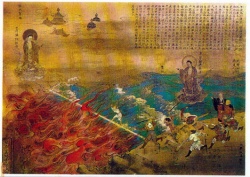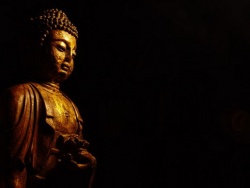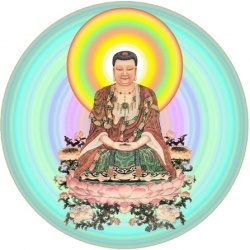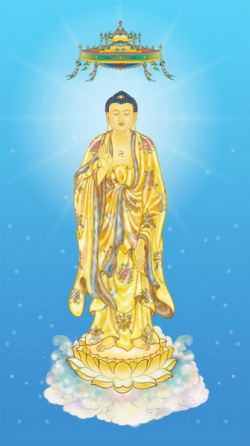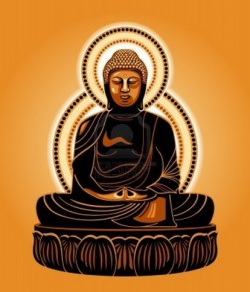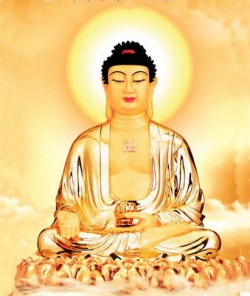The Revival of Tiantai Buddhism in the Late Ming
On the Thought of Youxi Chuandeng (1554--1628)
2011 Dissertation Author: Yungfen Ma
Abstract: This dissertation is a study of Youxi Chuandeng's (1554-1628) transformation of "Buddha-nature includes Good and Evil," also known as "inherent Evil," a unique idea representing Tiantai's nature-inclusion philosophy in Chinese Buddhism. Focused on his major treatise On Nature Including Good and Evil , this research demonstrates how Chuandeng, in his efforts to regenerate Tiantai, incorporated the important Intellectual themes of the late Ming, especially those found in the Suramgama Sutra.
In his treatise, Chuandeng systematically presented his ideas on doctrinal classification, the principle of nature-inclusion, and the practice of the Dharma-gate of inherent Evil. Redefining Tiantai doctrinal classification, he legitimized the idea of inherent Evil to be the highest Buddhist teaching and proved the superiority of Buddhism over Confucianism. Drawing upon the notions of pure Mind and the seven elements found in the Suramgama Sutra. , he reinterpreted nature-inclusion and the Dharma-gate of inherent Evil emphasizing inherent Evil as pure rather than defiled. Conversely, he reinterpreted Suramgama Sutra. by nature-inclusion. Chuandeng incorporated Confucianism and the Suramgama Sutra. as a response to the dominating Thought of his day, this being the particular manner in which previous Tiantai thinkers upheld, defended and spread Tiantai. What set Chuandeng apart from his predecessors were his efforts to harmonize rather than criticize other Buddhist schools. The Suramgama Sutra. was emblematic of the syncretic Intellectual trend of the late Ming and its popularity was widespread. Chuandeng ably took ideas from the Suramgama Sutra. to make his points. Chuandeng was a culminator and innovator of nature-inclusion and his Thought and activities represent the revival of Tiantai in the late Ming.
This study proves that the Tiantai School was not a marginal but rather an active contributor to the overall revival of Buddhism in the late Ming of C ONTENTS List of Diagrams ii Acknowledgment s iii Chapter 1 Introduction 1 Part I Chuandeng and the Development of Nature - inclusion Thought Chapter 2 Chuandeng’s Life 1 9 Early Life 20 Monastic Training and Teacher s 22 The Revival of Ga oming Monastery 28 Activities to Revive Tiantai 37 Chapter 3 Zhiyi’s “Buddha - nature Includes Good and Evil” Thought 47 Buddha - nature 47 Buddha - nature Includes Defileme nt and Purity 52 Zhiyi’s Main Philosophical Framework 54 What is Good and Evi l 61 Inherent Good and Inherent Evil 63 the Dharma - gate of Inherent Evil 68 Chapter 4 The Development of Nature - inclusion Thought from the Tang to the Yuan: Zhanran, Zhili and Huaize 76 Jingxi Zhanran 荊溪湛然 (711 - 782) 76 Siming Zhili 四明知禮 (960 - 1028 ) 83 Huxi Huaize 虎溪懷則 (fl. 1310) 94 Chapter 5 The Śūra ṃ gama Sūtra and Late - Ming Buddhism 103
An Introduction to the Śūra ṃ gama Sūtra 104 The Increasing Influence of the Śūraṃgama Sūtra from the Tang to the Mid - Ming 110 The Śūraṃgama Sūtra and Late - Ming Syncretism of the Three Teachings 116 The Śūraṃgama Sūtra and Late - Ming Buddhist Syncretism 124 Part II On Nature Including Good and Evil
Chapter 6 Doctrinal Classification 138 The Worldly Teaching 139
The Supra - mundane Teaching — The Five Period s 157 Chapter 7 Chuandeng’s Theory on the Principle of Nature - inclusion 178 The First Gate: In Unchanging Suchness the Ten Realms are Hidden 179 ii The Second Gate: When Suchness Follows Conditions, the Ten Realms Become Differentiated 187 The Third Gate: The Unchanging Follows Conditions, the Non - differentiated Is the Differentiated 196 The Fourth Gate: Following Conditions yet without Change, Differentiated yet Non - Differentiated 215 Chapter 8 Chuandeng’s Theory on the Practice of the Dharma - gate of Inherent Evil 227 The Fifth Gate: In the Causal Mind All Is Orginally Included and Nothing Is Lacking 228 The Sixth Gate: At the Stage of Fruition within the Perfect Realization, Nothing Has Changed 233 The Seventh Gate: When Perfectly Practicing by Following Pure Conditions, the Entirety of Practice Rests in Nature 251 The Eighth Gate: Following Pure Conditions to Reach Perfect Realization, Lifting One Thing and All Are Gather ed within
I offer my deepest respect to The Buddha, whose profound teachings carried me throughout the process of Writing this dissertation. I am greatly indebted to my monastic order, Chung Tai Chan Monastery , for the support provided me in every aspect during my studies. My most sincere Gratitude goes to my master, Ven. Wei Chueh, who constantly enlightens me spiritually. I thank my advisor, Dr. Chün - fang Yü, for she is the embodiment of the title of one of her works, Guanyin , the Bodhisattva of Compassion. Her Insight, expertise and industrious attitude toward study have impac t ed my Life and her continuous and timely response s to my questions were always given with heartwarming encouragement. I would like to thank Dr. Zhong W ei Wu for his invaluable understanding on Tiantai Thought and Dr. Jiang Wu for his helpful insights on Ming Tiantai. I am also grateful to Dr. Robert Thurman for his guidance and support throughout these years . A special thank you to Dr. Bernard Faure and Dr. Wendi Adamek for their helpful advice on my research. Thanks also to Dr. Micheal Como for his lighthearted conversations. To my Columbia friends and colleagues, your gracious Friendship has been an important source of inspiration for me to continue my work.
I deeply appreciate the editorial assistance of Hernan Lavin, Liz Whiteford, Bessie Yu and Marilyn Wetmore. To Hernan, thank you for your selfless, tireless and patient editorial work. The completion of this dissertation is owed to your careful persistence and unequivocal Faith in Chuandeng’s teaching . This work is dedicated to all Sentient beings, including my family, with the hope that they will soon realize their true nature.
1 Chapter 1 Introduction My dissertation is a study of the Tiantai concept of “nature - inclusion” ( xing ju 性具 ) as developed by Youxi Chuandeng 幽溪傳燈 (15 5 4 - 1628), particularly in his work On Nature Including Good and Evil ( Xin shan e lun 性善惡論 ). Chuandeng, a prominent Buddhist monk, is traditionally honored as “the Patriarch who revived the Tiantai School during the Ming dynasty.” His creative reinterpretation of “nature - inclusion,” a distinctive Tiantai understanding of Buddha - nature, played an important part in the revival of seventeenth century Tiantai Buddhism. Mainly based on the analysis of his treatise, I will discuss the Intellectual Influences that led to his innovative interpretation.
Particular attention will be given to the influence the Śūraṃgama Sūtra (one of the most important texts in later Chinese Buddhist history) had on Chuandeng’s Thinking. A Chinese school of Mahāyāna Buddhism, Tiantai has had a major impact on East Asian Buddhism in general. It is the first Buddhist school to originate in China rather than in India. Indian Buddhism came to China two thousand years ago and , by the sixth century , the Chinese were introduced to a wide range of theories and practices of Indian Buddhist schools. It was not until the appearance of Tiantai during the Sui and Tang dynasties that Chinese Buddhism started to Form an independent character.
Zhiyi 智顗 (538 - 597), considered the founder of Tiantai, created his own doctrinal system that marked a new phase in the history of Chinese Buddhism. Tiantai also influenced, in varying degrees, later Chinese Buddhist Schools such as Huayan, Chan (Japanese: Zen) , and Pure land. The significant influence of Tiantai Thought is not limited to Chinese Buddhism but also extends to East Asian Buddhism. Tiantai teaching soon spread to 2 Japan and Korea and later became the Tendai school and the Cheontae school, founded by Saichō (767 - 822) and Uicheon (1055 - 1101) respectively. Both schools also impacted the indigenous religions of Japan and Korea. Tendai , in particular , exerted great influence on Japanese culture , as Paul l. Swanson states, “I was struck by the almost ubiquitous influence of the T’ien - t’ai/Tendai tradition in Japanese Religion, culture, and history.” 1 Without a Doubt, Tiantai Thought is not only one of the leading philosophical systems in Chinese Buddhism but also a major contributor to World Intellectual history. Based on a central Buddhist scripture, the Lotus Sutra , Zhiyi proposed a multidimensional and comprehensive system of Thought.
It is well - known for a variety of concepts such as the Doctrinal Classification ( pan jiao 判教 ), known as the “Five periods and Eight teachings” ( wu shi ba jiao 五時八教 ) 2 , a system used to classify the various types of teachings preached by The Buddha at different times of his Life. Other concepts such as the “Threefold Truth of Perfect Interpenetration” ( yuan rong san di 圓融三諦 ) 3 , the 1 Swanson, Foundations of T’ien - Tai Philosophy , x, 155. 2 The Five periods refer to the chronological division of The Buddha’s teachings and the Eight teachings refer to the division according to method and Doctrine. The Five periods are:
(1) Avata ṃ saka period ( Huayan shi 華嚴時 )
(2) Āgama period ( Ahan shi 阿含時 )
(3) Vaipulya period ( Fangdeng sh i 方等時 )
(4) Prajñā period ( Bore shi 般若時 )
(5) Lotus and Nirvā ṇ a period ( Fahua niepan shi 法華涅槃時 ). The Five periods will be discussed in detail in chapter six.
The four teachings according to the nature of the Doctrine are:
(1) Tripi ṭ aka ( cang 藏 )
(2) Common ( to ng 通 )
(3) Separate ( bie 別 )
(4) Round ( yuan 圓 ).
These four teachings will be discussed in detail in chapters three and six. The four teachings according to the methods used by The Buddha are:
(1) Sudden or Immediate ( dun 頓 ); This is a suitable method for the audience who is able to grasp the ultimate Truth immediately.
(2) Gradual ( jian 漸 ); This is used to lead the audience step by step from the elementary to the ultimate Truth.
(3) Secret ( mimi 祕密 ); This is used by The Buddha when he speaks secretly to some one and only the addressee knows and understands.
(4) Indeterminate ( buding 不定 ); When The Buddha is teaching, the hearers understand differently.
With these methods, The Buddha can be quiet in one place but speaking in another. When he is preaching one Sutra, the Sutra can have different meanings to different people. 3 Zhiyi’s view of Reality. Threefold Truth is comprised of the Empty, the Provisional, and the Middle. They are three aspects of Reality. These three are united and mutually included in and
identical to one another. It reveals that all things in The Universe coexist and interpenetrate, so it is called the Threefold Truth of Perfect Interpenetration. Details will be discussed in chapter three. 3 “Threefold Contemplation in One Mind” ( yi xin san guan 一心三觀 ) 4 , the “Three Thousand Worlds in One Thought” ( yi nian san qian 一念三千 ) 5 , the “Four Forms of Samādhi” ( si zhong san mei 四種三昧 ) 6 , and that of “Buddha - nature includes both Good and Evil” ( xing ju shan e 性具善惡 ) are also well - known. These all represent Tiantai theoretical and practical systems that were never found in Indian Buddhism. Of the various original concepts contained in Tiantai, it is the concept of “ nature - inclusion ” that captures the entire meaning of Tiantai philosophy. Nature - inclusion is the way in which Zhiyi views the relationship between all things and Reality ( shi xiang 實相 ). “Nature” represents the original nature of all things, i.e. Reality, while “Inclusion” has two meanings: inherent inclusion ( ben ju 本具 ) and mutual inclusion ( hu ju 互具 ). “Nature - inclusion” means that all things are inherently included in nature and, at the same time, all things are mutually included in each other. This idea expresses that the existence of all things and the existence of nature are not in sequential order.
As one scholar puts it, “All dharmas include each other by their own nature from the very beginning.” 7 This is a fundamental difference from the “nature - origination” ( xing qi 性起 ) Thought of the Huayan school. Huayan Thought sees nature as primal purity prior to the arising of all things that originate from it. These two competing ideas 4 One of the Tiantai practices. Since one Thought embodies Reality, thus Reality can be reached by simultaneously observing the Empty, Provisional, and Middle Truths within a single Thought. 5 Zhiyi considers that the entire Universe includes three thousand worlds and that all the worlds coexist and interpenetrate within any one Thought. Details will be discussed in chapter three. 6 Zhiyi groups all practices into four categories: Samādhi of Constant Sitting 常坐三昧 , Samādhi of Constant Walking 常行三昧 , Samādhi of Half Walking and Half Sitting 半行半坐三昧 , and Samādhi of Non - walking and Non - sitting 非行非坐三昧 . See Zhiyi, Mohe zhiguan 摩訶止觀 , T46: 11a. 7 Ra, “The T’ien - t’ai Philosophy of Non - duality: A Study in Chan - jan and Chi - li,” 78. 4 of Tiantai and Huayan dominated the philosophical developments in Chinese Buddhism. Among all the different Tiantai concepts that center on the notion of “nature - inclusion,” the claim that “Buddha - nature includes both Good and Evil” is most unusual. Its uniqueness consists in that Evil is inherently included in Buddha - nature.
Buddha - nature is understood in the Mahāparinirvā ṇ a - Sūtra as a universal innate potential given to every sentient being and is the basis for Awakening and becoming a Buddha. Traditionally, Buddha - nature, as ultimate Reality, is said to be the supreme purity that is free from duality and thu s is neither good nor Evil. In this sense, when Buddha - nature is described as “good,” it means the supreme purity that transcends all opposites. Zhiyi, however, was the first Buddhist thinker to develop the idea that Buddha - nature includes Evil. Mahāyāna Buddhism’s concept of Buddha - nature is at the core of Chinese Buddhism. Zhiyi’s original idea not only set Tiantai Doctrine apart from that of other schools but also opened a new course of Thinking in Chinese Buddhism. Most Chinese Buddhist Schools regard B uddha - nature as the Mind - nature ( xin xing 心性 ) of Sentient beings. In other words, the nature of Mind is the nature of Sentient beings as well as the nature of Buddha, i.e., Reality. The four most influential Chinese Buddhist Schools, which include two philosophical schools, Tiantai and Huayan, and two practical schools, Chan and Pure land, all base the development of their distinctive features on Buddha - nature. Huayan’s nature - origination Thought sees Mind - nature as the primal purity prior to and the source of the arising of all things.
As observed by Robert Gimello, “[T]he full diversity of sentient experience and the experienced World…is seen to rest 5 upon or to grow from a common noetic source.” 8 From the perspective of practice, Chan emphasizes “self - Power” by which one sees one’s own Mind - nature thus directly accomplishing Buddhahood. In contrast to Chan, Pure land highlights “other - Power,” i.e., that of a Buddha, in which one repeats the name of a Buddha or contemplates The Buddha to attain the state of the undisturbed one - Mind so as to be rebor n in the Pure land. All of these schools teach that Buddha - nature is supreme purity and contains only the good. But Tiantai alone proclaims that Buddha - nature contains not only the good but also the Evil. The basis of this creative idea is the theory of nature - inclusion. In terms of Mind - nature as Buddha - nature, Tiantai Thought sees the mutual inclusiveness of all things and Mind. It rejects the Mind as the primal purity prior to all things. This rejection denotes that the ten realms 9 of all Sentient beings from Hell to Buddhahood are inherently included in Buddha - nature and that the ten realms are mutually included in each other.
Thus, Buddha - nature inherently includes the good of Buddha and the Evil of Sentient beings. Moreover, the Evil and the good are mutually included in each other as well. In other words, all Sentient beings inherently possess the good of Buddhas and all Buddhas inherently possess the Evil of Sentient beings. It is this very novel idea that differentiates Tiantai Buddha - nature Thought from that of other schools. Later Tiantai thinkers developed and upheld this unique idea, especially that of “Buddha - nature includes Evil,” also known as “inherent Evil” ( xing e 性惡 ). For instance, Jingxi Zhanran 荊溪湛然 (711 - 7 82) of the Tang dynasty declared , “ Tathāgatas 10 do not 8 Gimello, “Chih - yen (602 - 668) and the Foundations of Hua - yen Buddhism,” 411. 9 Buddhist ten divisions of The Universe: Hell - being, hungry Ghost, animal, Asura, human, God, śrāvaka, Pratyekabuddha, Bodhisattva, and Buddha. 10 如來 ( ru lai ), interpreted as “Thus - come One,” one of the titles of a Buddha. 6 cut off the inherent Evil and icchantikas 11 do not cut off the inherent good. When this meaning alone is pointed out, all the hindrances [to the understanding of the truth) will automatically disappear.” 12 Siming Zhili 四明知禮 (960 - 1028) of the Song dynasty asserted , “Just this one single word — inclusion ( ju 具 ) — clearly reveals [the doctrine of] our school. The masters of other schools also know that Buddha - nature includes good, but none of them know that [[[Buddha]] - nature] as Conditioning Cause and Revealing Cause 13 also includes Evil.” 14 Moreover, Huxi Huaize 虎溪懷則 (fl.1310) of the Yuan dynasty maintain ed , “Today, the achievement of nature - inclusion Thought lies in inherent Evil.” 15 While the Tiantai thinkers criticize d other schools for not knowing inherent Evil, they upheld “inherent Evil” as the highest teaching of Tiantai. Thus “inherent Evil” gradually came to represent “nature - inclusion” Thought and vice versa. Both “ inherent Evil” and “nature - inclusion” we re regarded as primary representations of Tiantai philosophy.
It is this very unique idea that attracted me to study nature - inclusion Thought, particularly the idea that Buddha - nature includes Good and Evil. I found, however, that most studies on Tiantai Thought in both Asia and the West concentrate on periods prior to the Ming. Tiantai in the Ming, however, has been widely ignored by Western and Asian 11 一闡提 ( yi chan ti ), traditionally meant the one who has cut off his roots of goodness. 12 Zhanran, Zhi quan fu xing chuan hong jue 止觀輔行傳弘決 , T46: 296a. 13 Zhiyi classifies Budd ha - nature into three types of causes for attaining Buddhahood: Buddha - nature as the direct cause ( zheng yin fo xing 正因佛性 ), that all beings are inherently endowed with the principle or nature of The Buddha; Buddha - nature as Revealing Cause ( liao yin fo xing 了因佛性 ), the Wisdom which illumines or realizes Buddha - nature; Buddha - nature as Conditioning Cause ( yuan yin fo xing 緣因佛性 ), the goodness and merits that result in Buddhahood. 14 Zhili, Quan yin xuan yi ji 觀音玄義記 , T34: 905a. 15 Huaize, Tiantai chuan fo xin yin ji 天台傳佛心印記 , T46: 934a. 7 scholars alike. In contrast to Chan and Pure land, Tiantai philoso phy is complex and vast.
This might be the reason why few Western scholars have pursued it. There have indeed been studies on individual Tiantai masters. The thoughts of Zhiyi, Zhanran , and Zhili have all received scholarly attention. For example, Leon Hurvitz wrote a pioneering work on Zhiyi. Paul Swanson discusses Zhiyi’s “Threefold Truth,” while Daniel B. Stevenson explores Zhiyi’s “four forms of Samādhi.” Linda Penkower focuses on Zhanran. Chi - wah Chen concentrates on Zhili. Lang E. Ra. studies both Zha nran and Zhili. Brook Ziporyn’s Evil and/or/as The Good: Omnicentrism, Intersubjectivity, and Value Paradox in Tiantai Buddhist Thought makes a comprehensive and detailed analysis of Zhili’s ideas on “inherent Evil.” But the apparent indifference to Ming Tiantai offers us little Knowledge about Tiantai Thought after the Song. It could be said that another reason why scholars have neglected to study Ming Tiantai is because Ming Buddhism is generally regarded as a period of decline. In particular, many schola rs consider that the philosophical schools of Tiantai and Huayan were lifeless and that only the Chan and Pure land schools continued to expand and grow in this period. Only in recent decades has late - Ming Buddhism attracted the concern of scholars and become a field of study. Araki Kengo regards this period as the period of New Buddhism , 16 and Chün - fang Yü considers this phase in Chinese Buddhism a “renewal.” Most studies on the Ming focus on the four great masters and offer a picture of the syncretic trend that was underway. For example, Chün - fang Yü’s study is on Zhuhong 袾宏 (1535 - 1615), Sung - peng Hsu ’s on Hanshan 憨山 (1546 - 1623), Jonathan C. Cleary ’s on Zhenke 真可 (1543 - 1602), and Shengyen ’s on Zhixu 智旭 16 Araki, Bukkyo to Yomeigaku 佛教 と陽明學 , 98. 8 (1599 - 1655). Moreover, Judith Berling’s study on Lin Ch ao’en 林兆恩 , known for his Thought on the “ Three Teachings in One,” and Timothy Brook’s study on how Ming Buddhism influenced the Chinese gentry also provides us with important Information about Buddhist activities in other fields during that period.
All the se studies, however, mainly emphasize the continuing expansion of Chan and Pure land and there is no dedicated study of Tiantai in the Ming. This disregard has led to the misunderstanding that the Tiantai Doctrine was in serious decline in the late Ming. Thus, the contributions of Tiantai thinkers , such as Chuandeng in the Ming , have so far been neglected. Even though scholars , on the one hand, have ignored Chuandeng, the Chinese Buddhist tradition itself, on the other , has honored him as the Patriarch who revived the Tiantai School in the late Ming. He brought the school back to the prosperity that was lost in the Song. He rebuilt Gaoming Monastery ( gaoming si 高明寺 ) on Mt. Tiantai, and turned it into a famous Monastery. Dedicated to giving Sutra lectures and promoting Meditation and repentance Rituals, he attracted a large number of Monks and lay followers. His contributions to the Tiantai teachings were even more significant. He was a prolific writer, comparable to the four great masters. Most of his works express the nature - inclusion Thought, the central pillar of his philosophy. Thus, a study on Chuandeng’s Thought is valuable for a better understanding of Ming Tiantai as well as Ming Buddhism.
I first discovered Chuandeng’s Thought while researching Ming Tiantai under the guidance of Professor Chün - fang Yü. We spent a semester reading and discussing Chuandeng’s On Nature Including Good and Evil . This treatise, written in his later years, systematically presents his nature - inclusion Thought as a whole. What I discovered was 9 his completely new approach to nature - inclusion Thought. I was surprised to find Chuandeng’s heavy reliance on the Śūraṃgama Sūtra, something never seen in that of his predecessors. He use d the Sutra as the basis to reinterpret both the theory of “nature including Good and Evil” and the practice of the “Dharma - gate of inherent Evil” ( xing e fa men 性惡法門 ) which is unique to Tiantai. Moreover, he used the idea of “nature including Good and Evil” as the rationale to modify Zhiyi’s doctrinal classification system in order to claim Tiantai’s authority over other Buddhist traditions and the superiority of Buddhism over other religions, especially Confucianism. Chuandeng’s nature - inclusion Thought reflects the important contemporary Intellectual forces he incorporated into his rationale and to which he artfully responded.
As I traced back the development of nature - inclusion, I was surprised by how Tiantai thinkers in earlier times did likewise in developing the idea of “nature including Good and Evil.” Like Chuandeng, they also incorporated contemporary influential teachings to uphold Tiantai’s authority. On Nature Including Good and Evil is the primary source of my research in investigating the changes of Ming Tiantai Thought. The treatise includes six fascicles. In terms of the contents, there are three parts. The first part, fascicle 1, is Chuandeng’s doctrinal classification s ystem. The second part, fascicles 1 and 2, is his reinterpretation of the principle of “nature including Good and Evil.” The third part, fascicles 2 through 6, is his reinterpretation on the practice of the “Dharma - gate of inherent Evil.” Using the three p arts of Chuandeng’s reinterpretations as the basis, I discuss how Tiantai thinkers developed nature - inclusion Thought by drawing from the larger Intellectual forces of their time. Chapter two is about Chuandeng, his Intellectual background and major activi ties 10 that led to the revival of Tiantai.
Chapters three and four offer an overview of the Intellectual history of the idea of “nature includes Good and Evil” in the periods before the Ming. It is necessary to examine the ways in which Chuandeng’s predecessors developed this idea in order to have a better understanding of Chuandeng’s Thought. After Zhiyi proposed that Buddha - nature includes inherent good and inherent Evil, it was further developed by Zhanran in the Tang, by Zhili in the Song, and by Huaize i n the Yuan. To explain Zhiyi’s nature - inclusion, Zhanran absorbed from the Huayan the dynamics of “unchanging suchness 17 that follows conditions” ( zhen ru bu bian sui yuan 真如不變隨 緣 ). Building on Zhanran’s contribution, Zhili further elaborated nature - inclusion by the well - known Buddhist notion of “identity” ( ji 即 ). Lastly, I discuss how Huaize developed it through the Chan idea of “transmission of the Mind - seal of The Buddha” (chuan fo xin yin 傳佛心印 ). These chapters demonstrate a common stylistic thread running through the efforts that these Tiantai thinkers made to express, develop , and defend nature - inclusion; they all incorporated new elements that reflected the larger Intellectual trends of their time.
Chapter five examines the influence the Śūraṃgama Sūtra had throughout the Ming. The Sutra reached an apex of popularity and was one of the most influential, commented , and studied Buddhist texts in late - Ming Intellectual circles. This Sutra was a catalyzing text in the syncretic trend underway in the late Ming . This provides the historical context for understanding why Chuandeng incorporated the Śūra ṃ gama Sūtra into his Thought. Chapter s six through chapter eight analyze Chuandeng’s On Nature Including Good 17 This word is fundamental to Mahāyāna philosophy, implying the absolute, the ultimate source, and character of all things. It is also another name for Budddha - nature. 11 and Evil . Chapter six discusses his doctrinal classification system. I take Zhiyi’s formulation of doctrinal classification as a basis to exam ine the changes Chuandeng made to the system. We will see that Chuandeng was the first Tiantai thinker to elevate the idea of “nature including Good and Evil” being the ultimate teaching The Buddha taught throughout his Life. He also used the idea to create a hierarchical synthesis of Buddhism and Chinese indigenous Thought, especially Confucianism.
